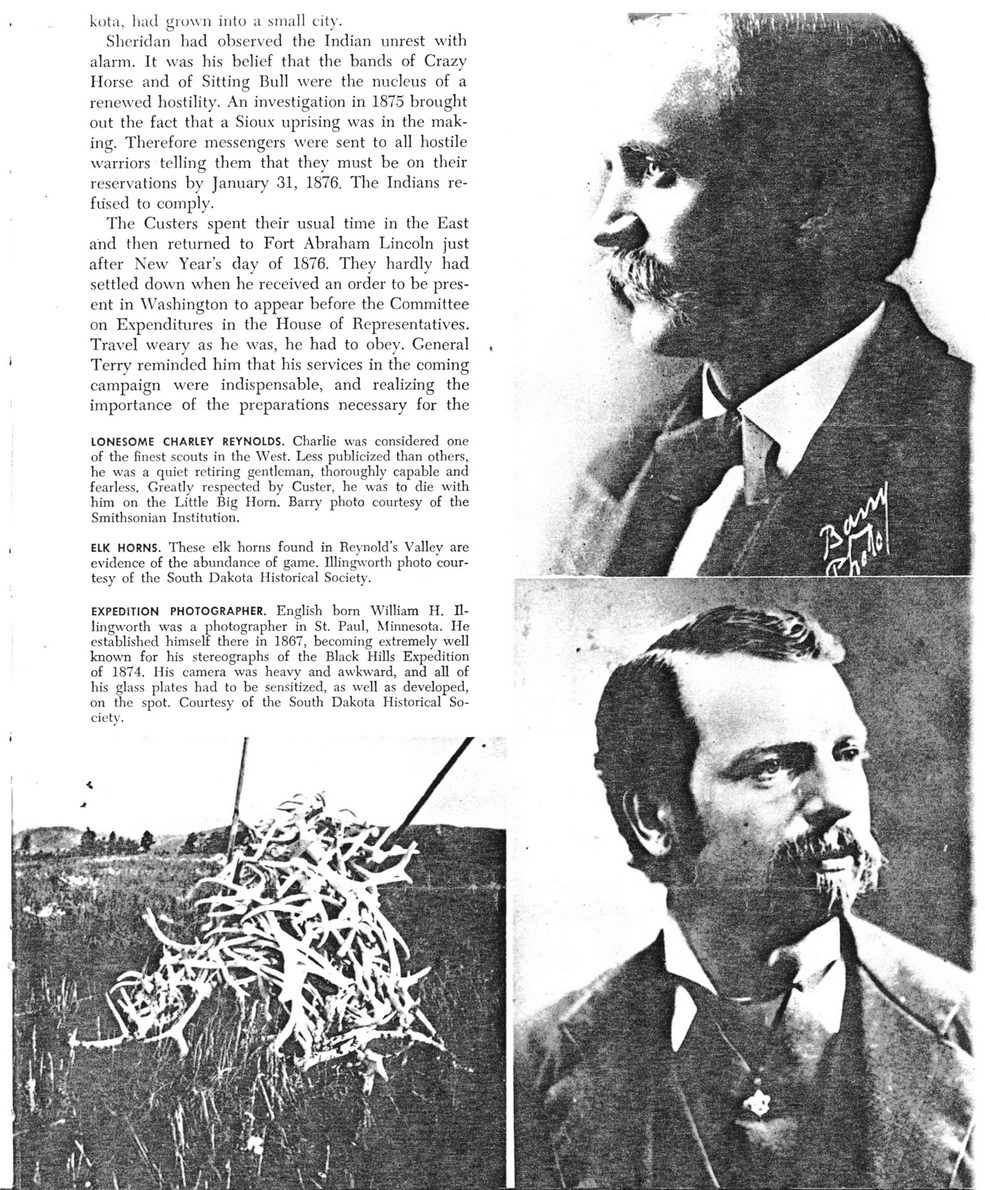This text was obtained via automated optical character recognition.
It has not been edited and may therefore contain several errors.
kota, had grown into a small city. Sheridan had observed the Indian unrest with alarm. It was his belief that the bands of Crazy Horse and of Sitting Bull were the nucleus of a renewed hostility. An investigation in 1875 brought out the fact that a Sioux uprising was in the making. Therefore messengers were sent to all hostile warriors telling them that they must be on their reservations by January 31, 1876, The Indians refused to comply. The Custers spent their usual time in the East and then returned to Fort Abraham Lincoln just after New Year?s day of 1876. They hardlv had settled down when he received an order to be present in Washington to appear before the Committee on Expenditures in the House of Representatives. Travel weary as he was, he had to obey. General Terrv reminded him that his services in the coming campaign were indispensable, and realizing the importance of the preparations necessary for the LONESOME CHARLEY REYNOLDS. Charlie was considered one of the finest scouts in the West. Less publicized than others, he was a quiet retiring gentleman, thoroughly capable and fearless. Creatlv respected by Custer, he was to die with him on the Little Big Horn. Barry photo courtesy of the Smithsonian Institution. ELK HORNS. These elk horns found in Reynold?s Valley are evidence of the abundance of game. Illingworth photo courtesy of the South Dakota Historical Society. EXPEDITION PHOTOGRAPHER. English bom William H. Illingworth was a photographer in St. Paul, Minnesota. He established himself there in 1867, becoming extremely well known for his stereographs of the Black Hills Expedition of 1874. His camera was heavy and awkward, and all of his glass plates had to be sensitized, as well as developed, on the spot. Courtesy of the South Dakota Historical Society.

Williams, Dr John W 013